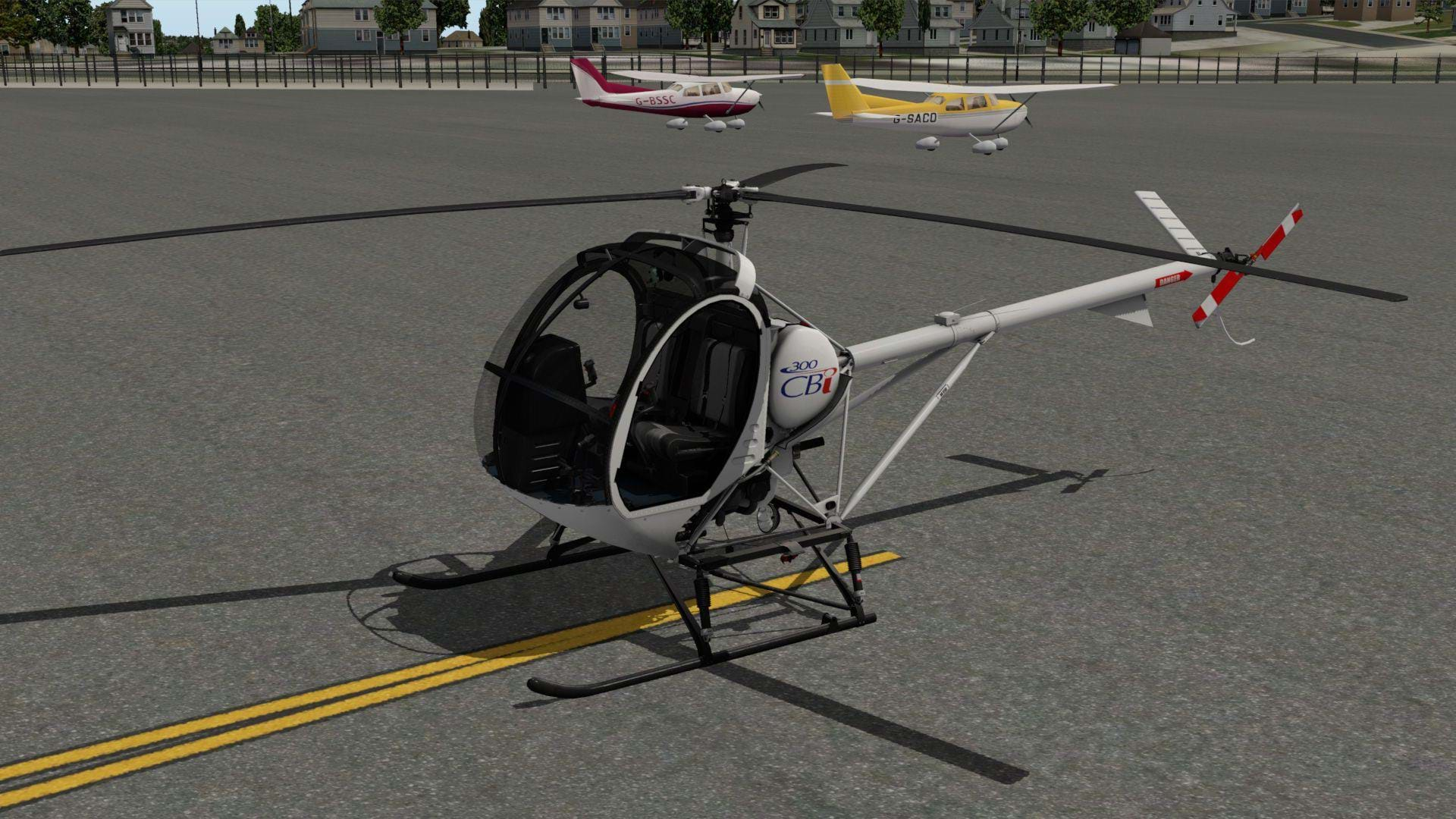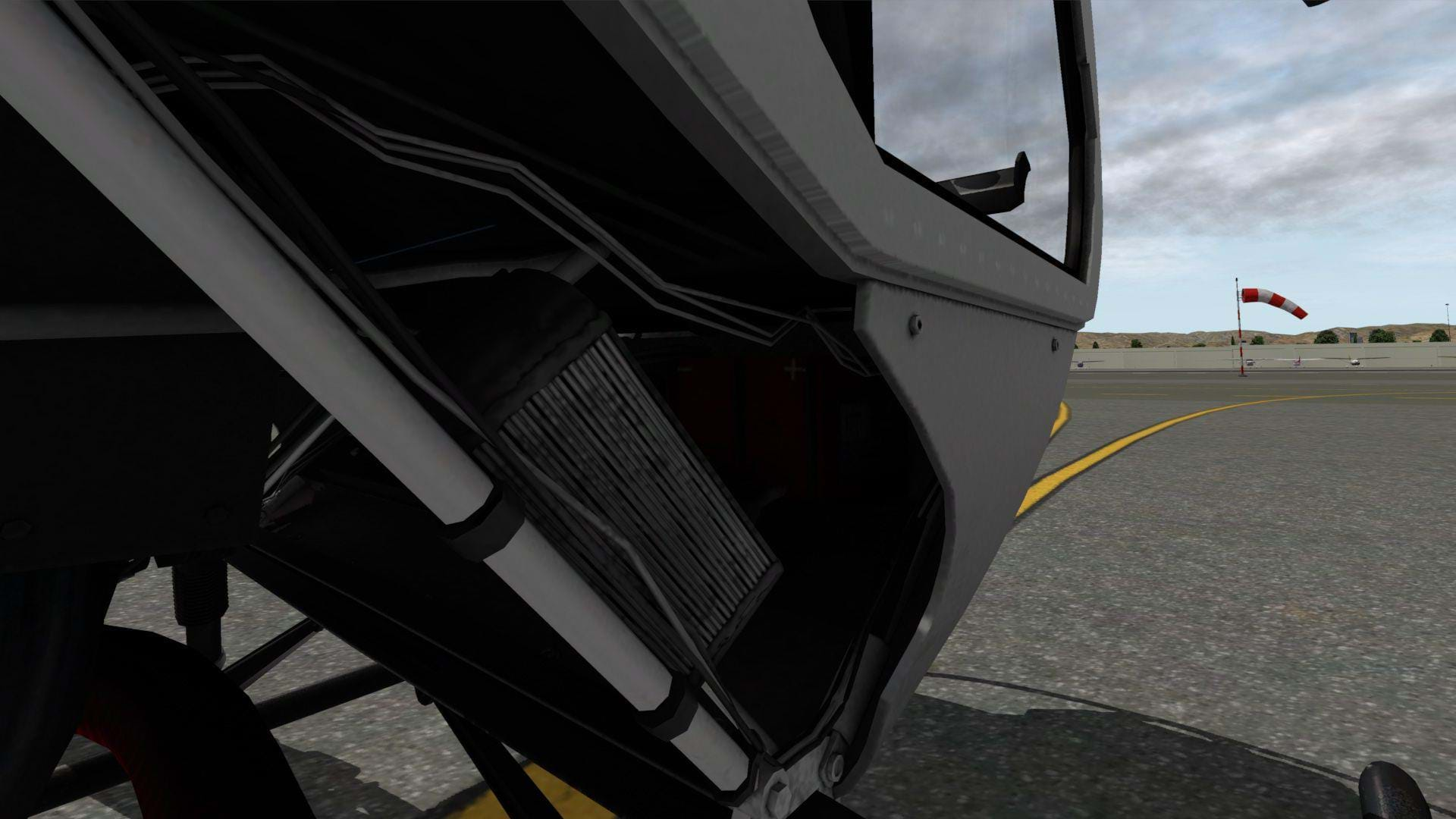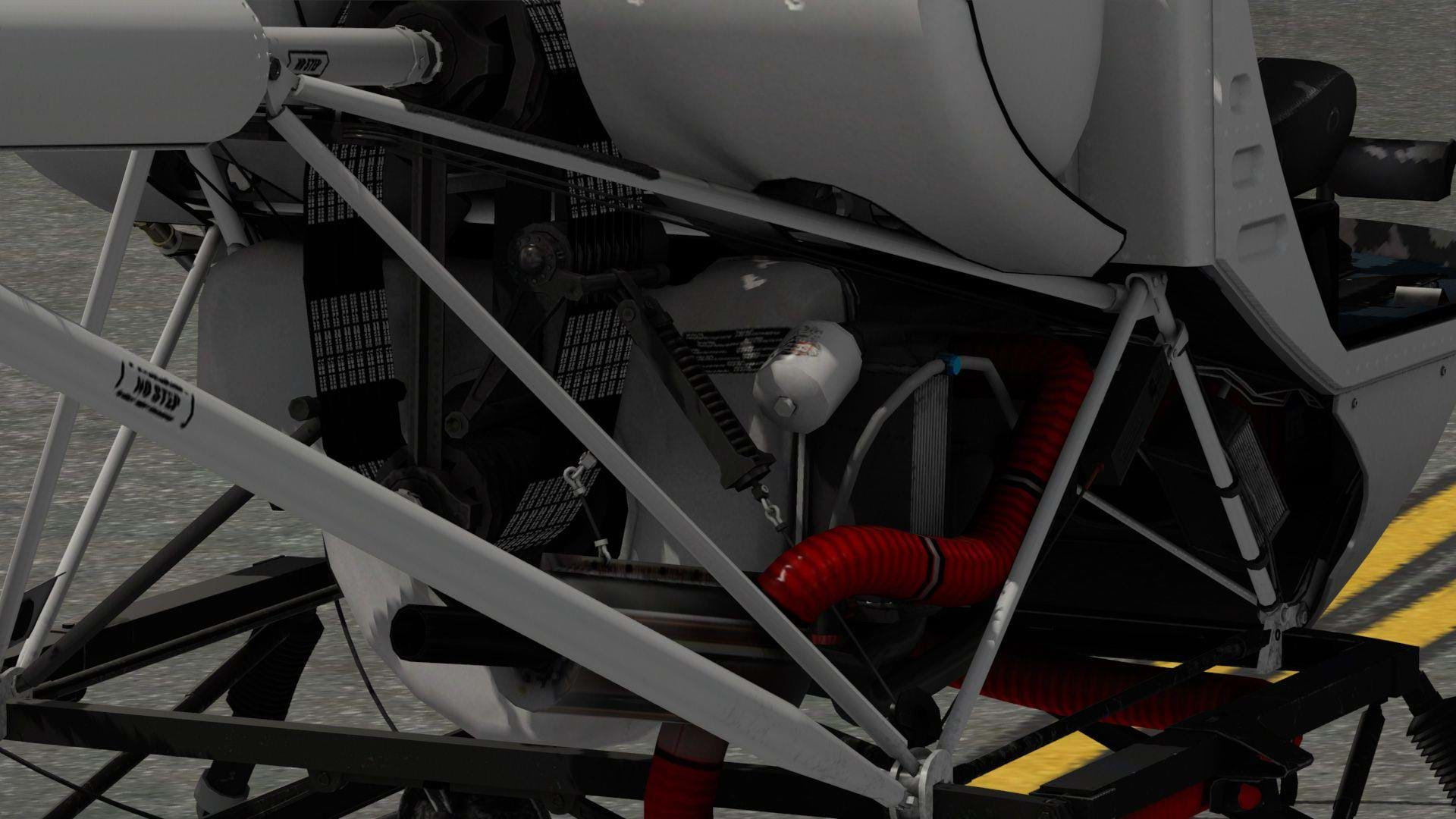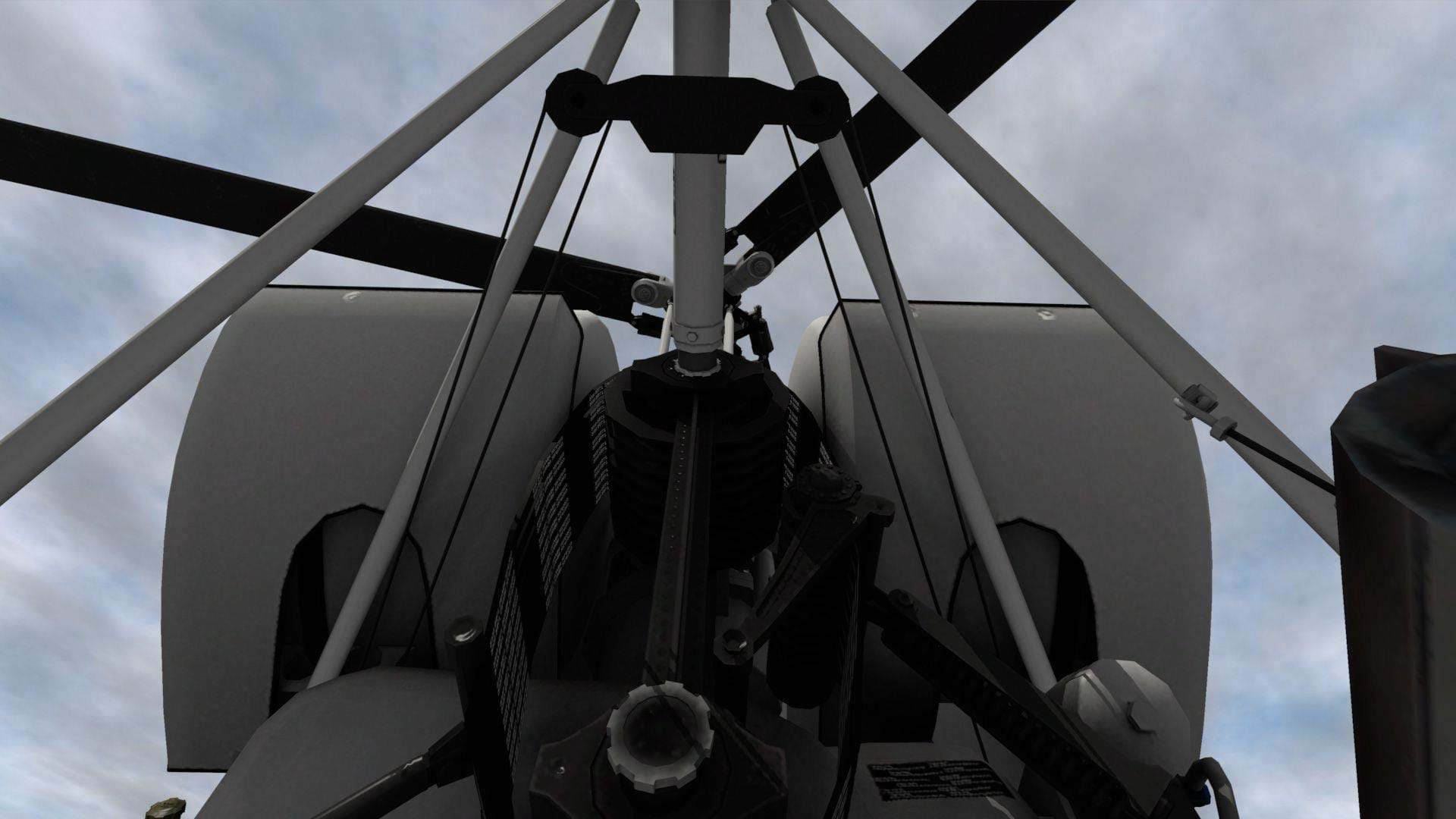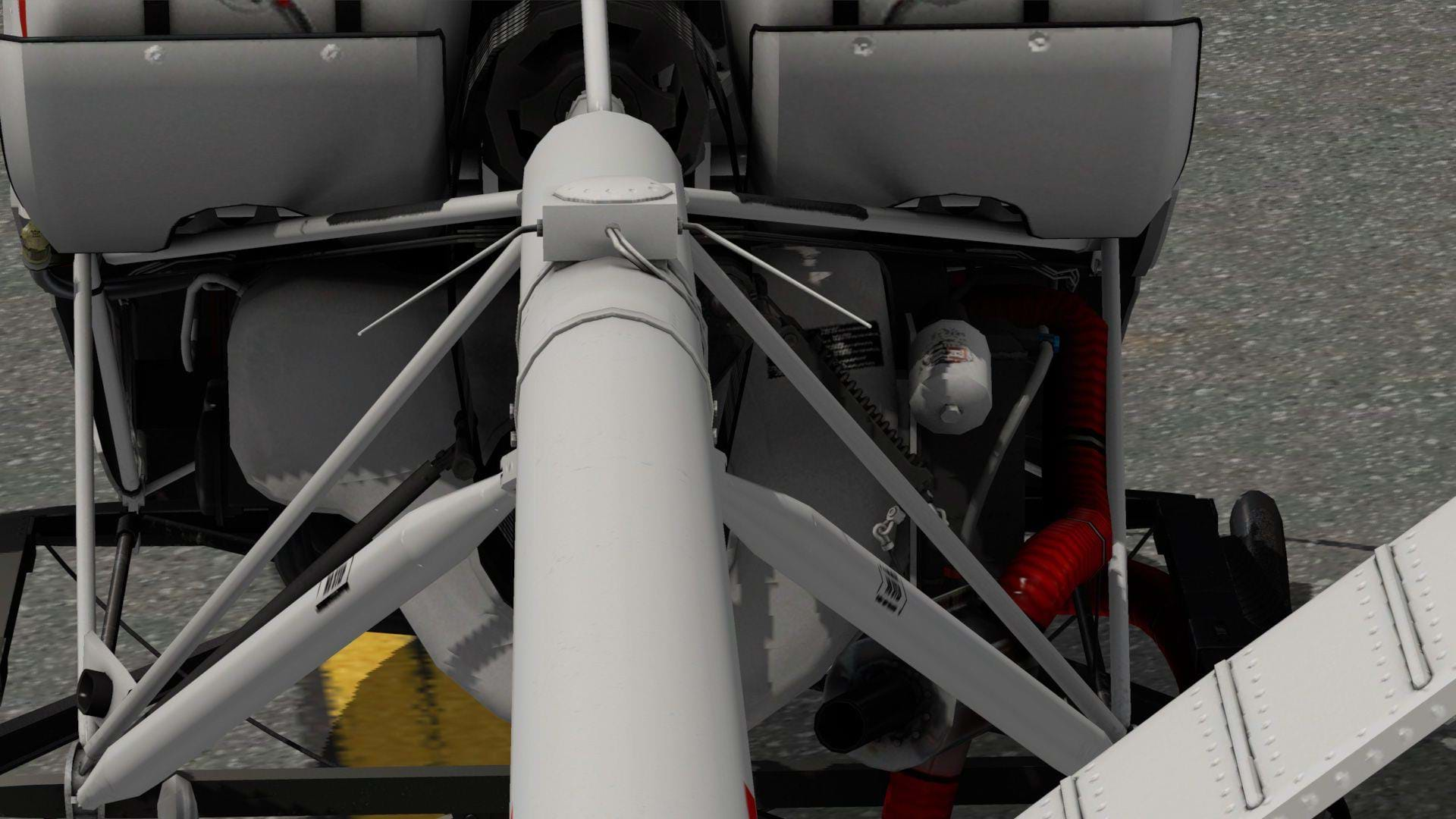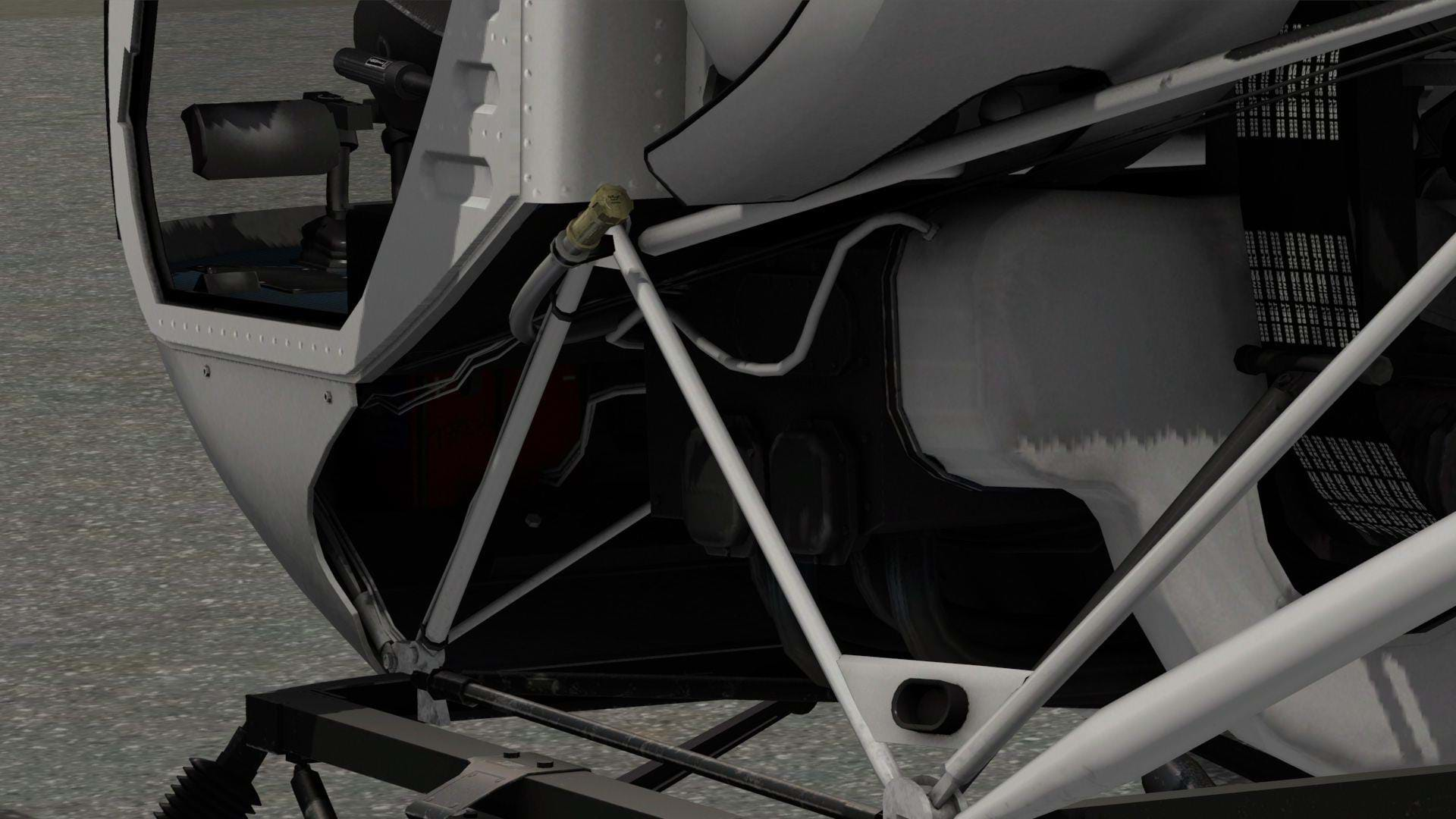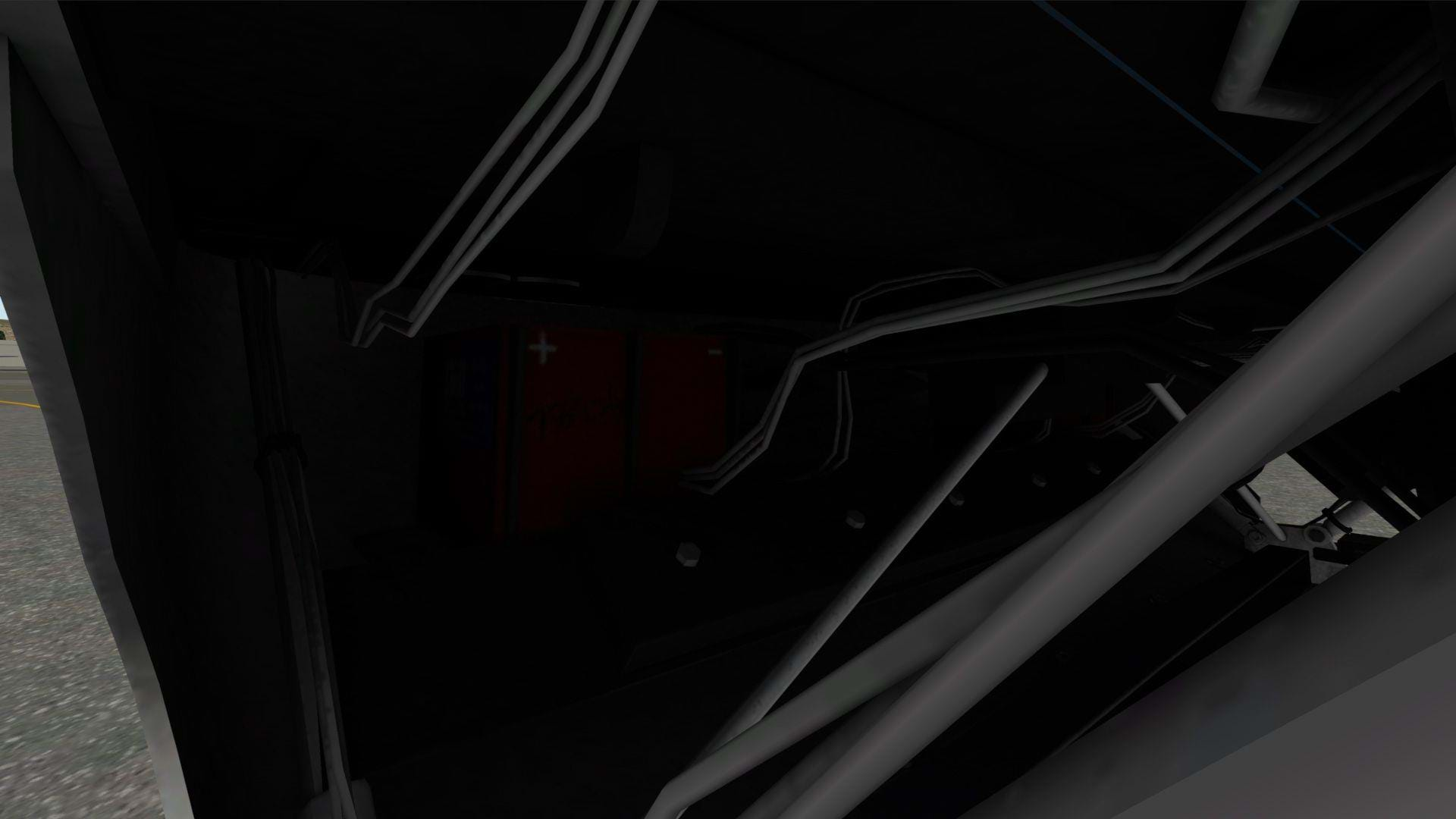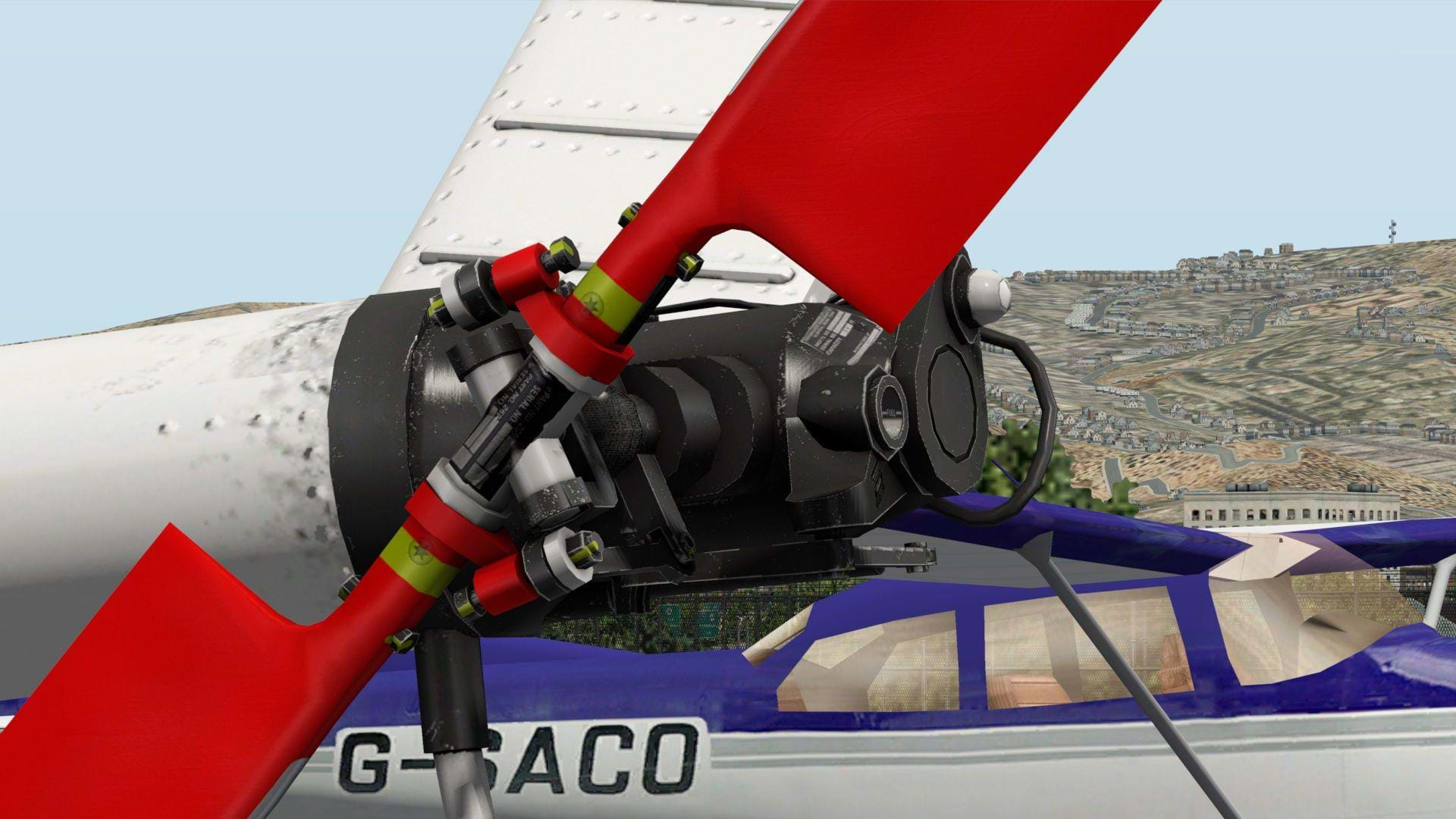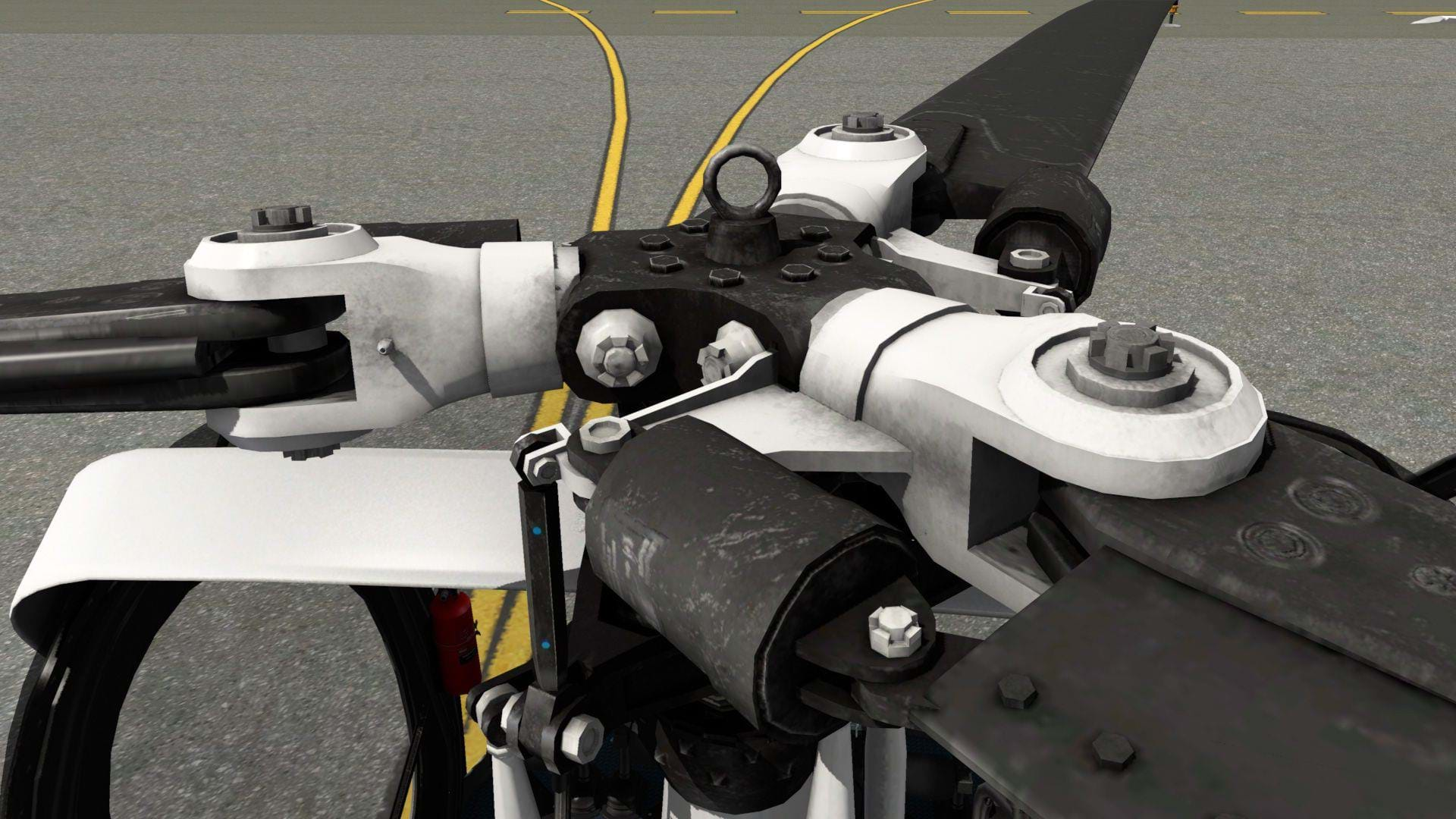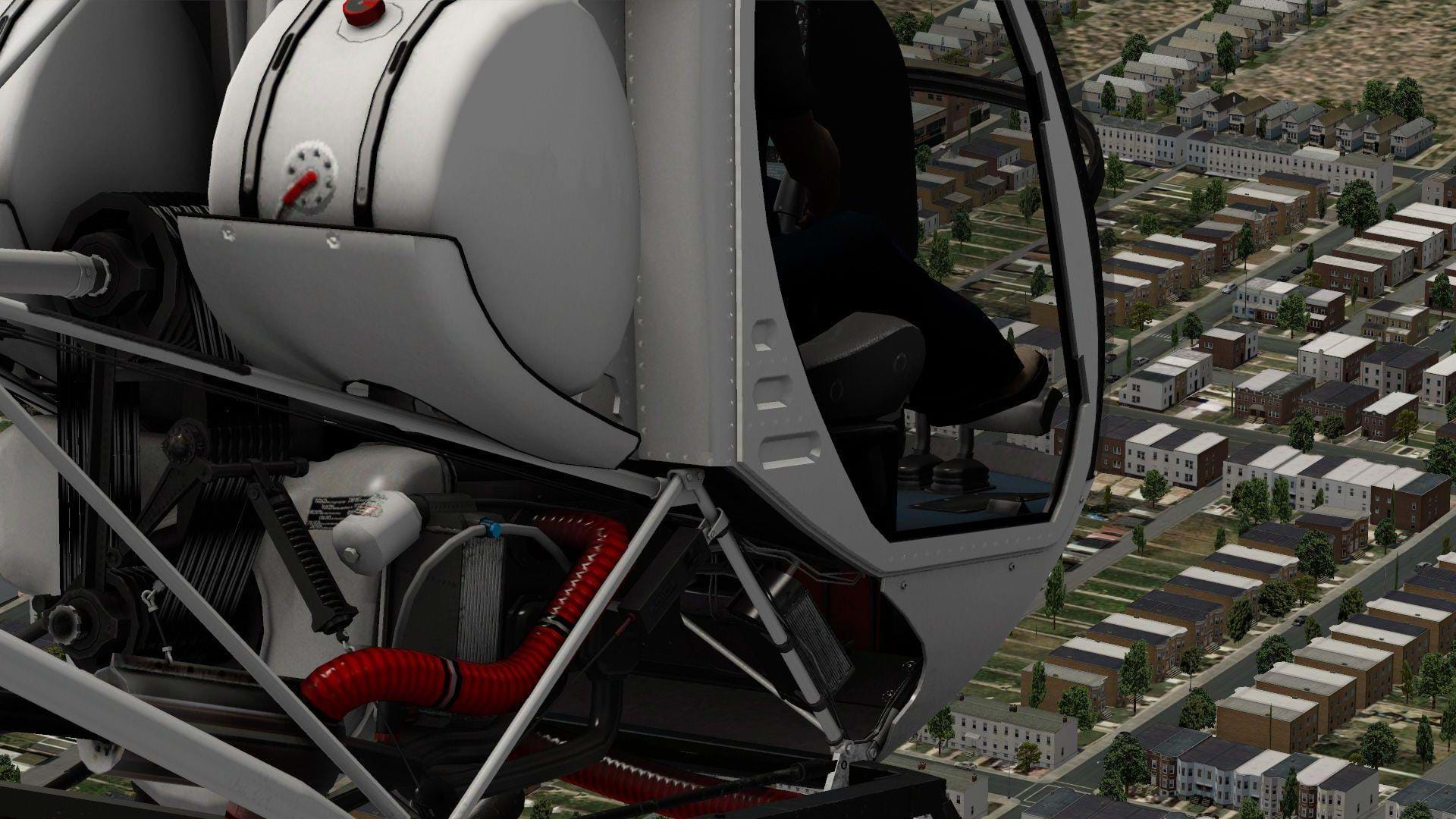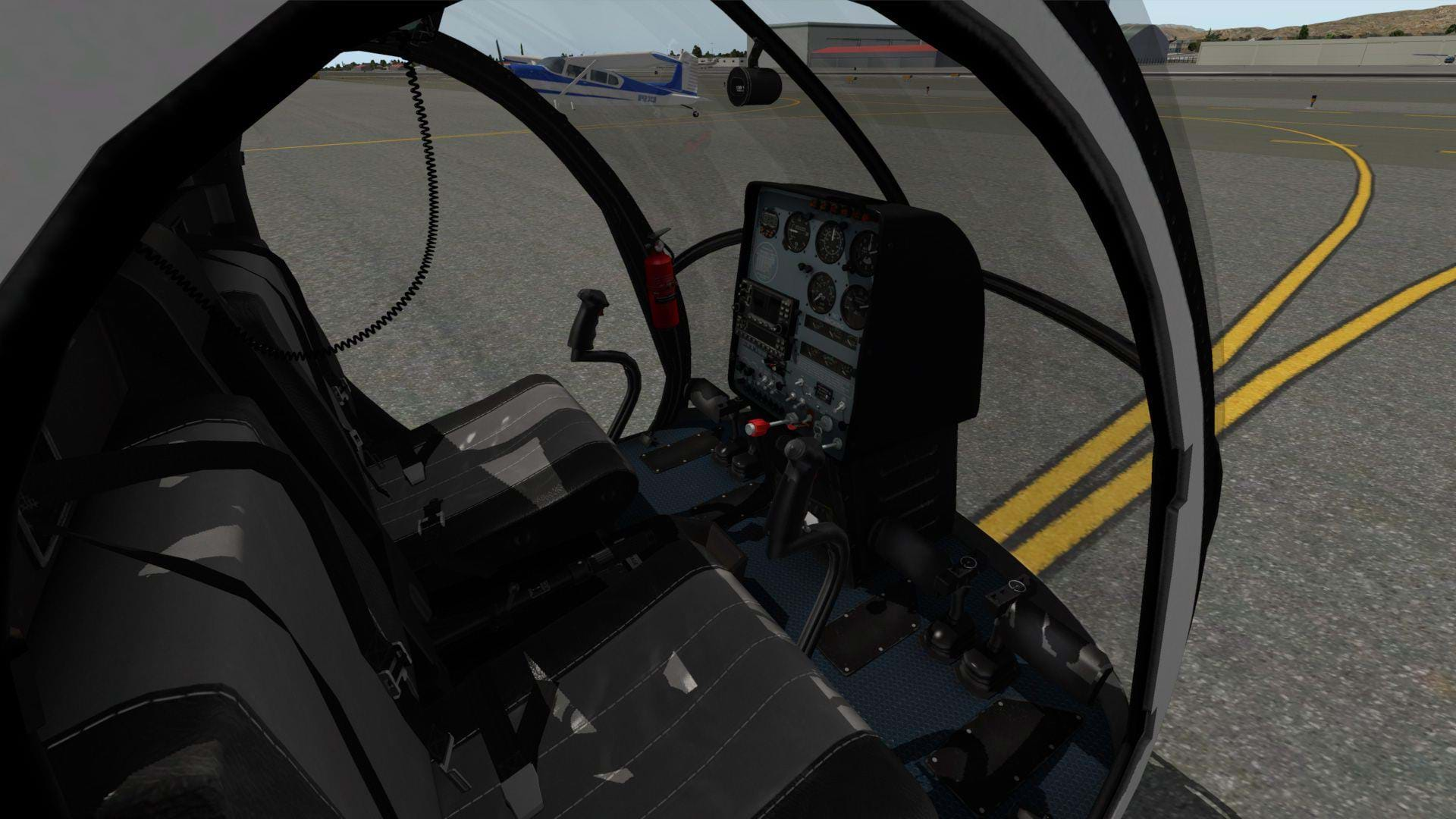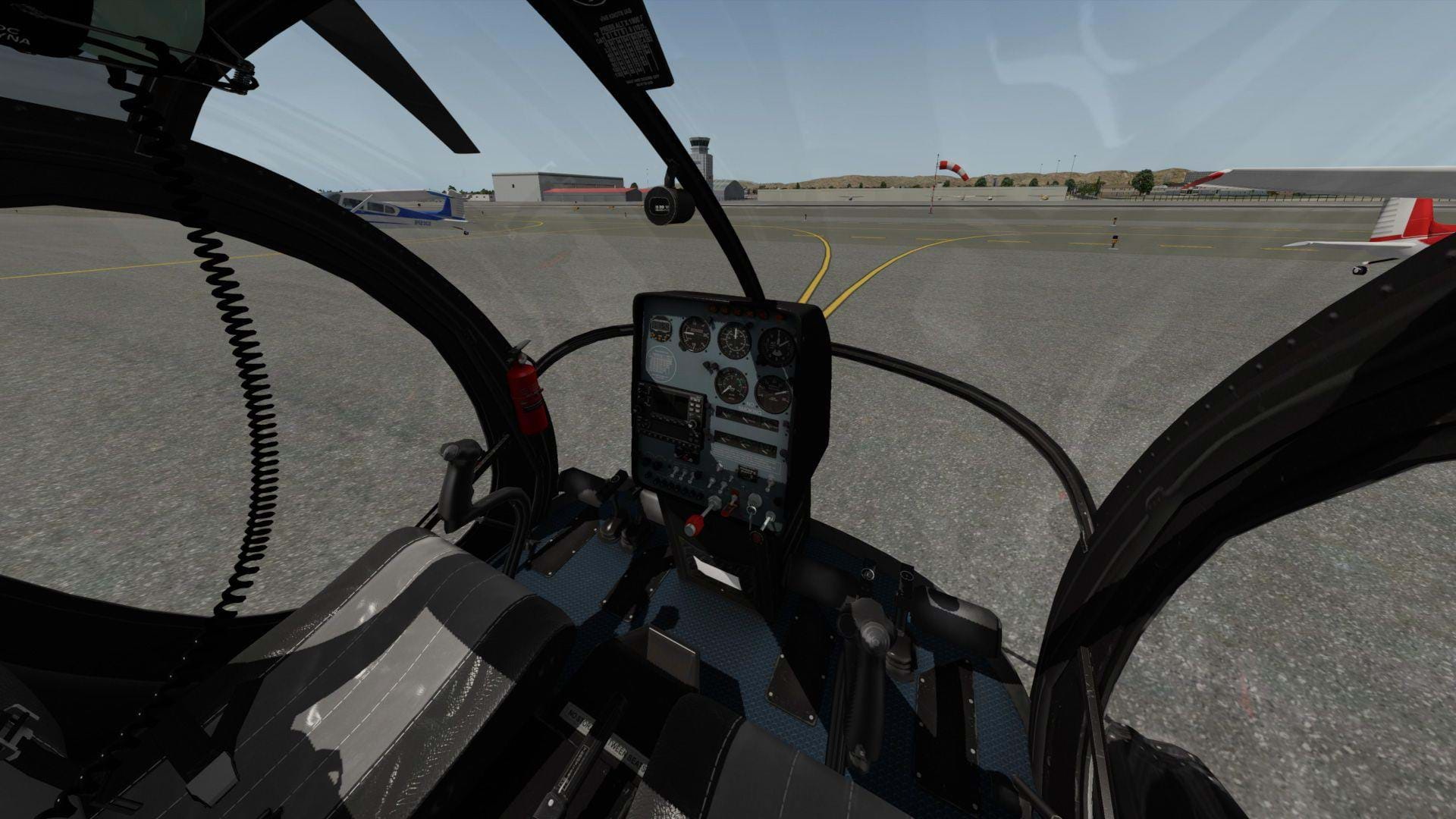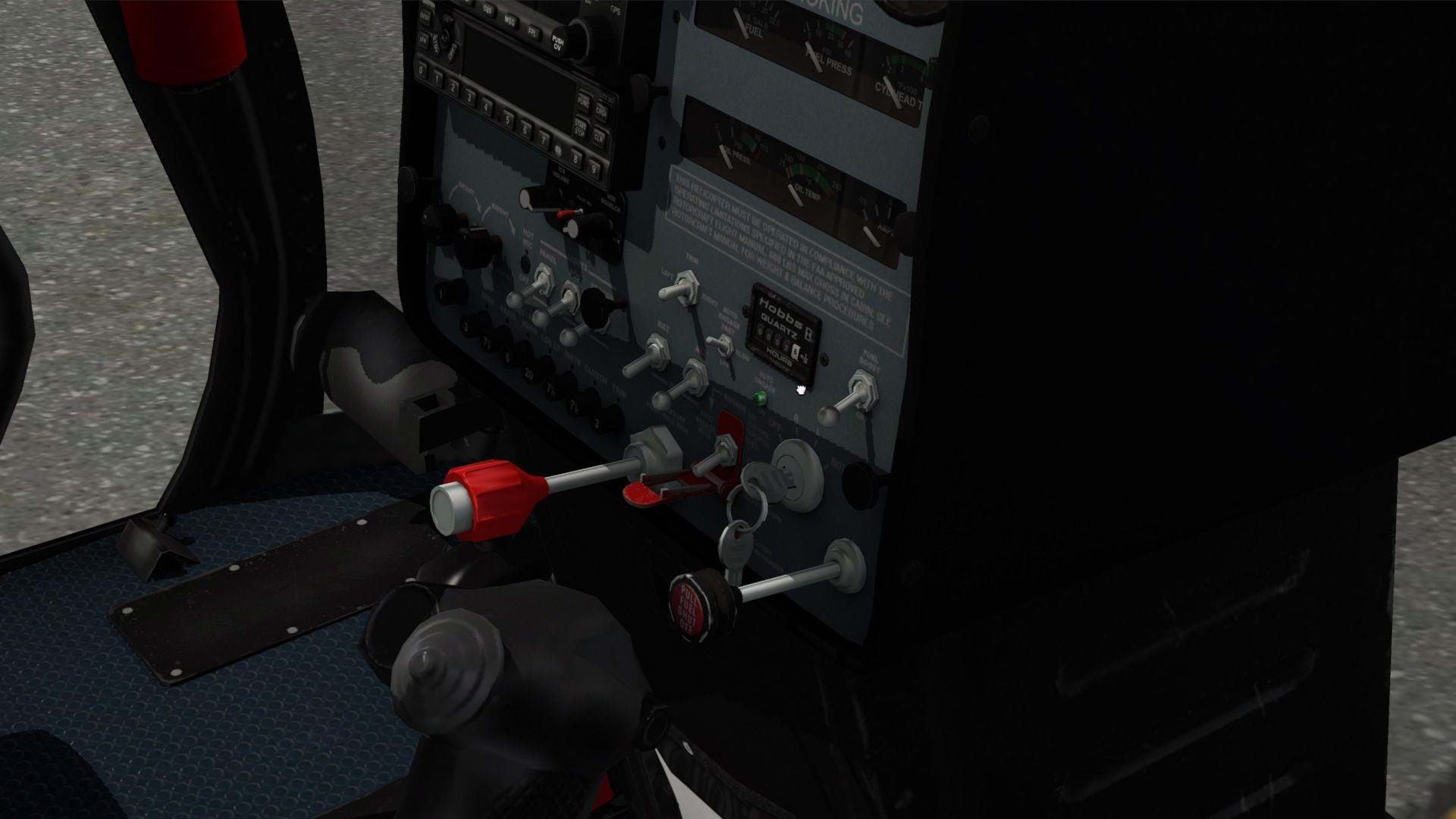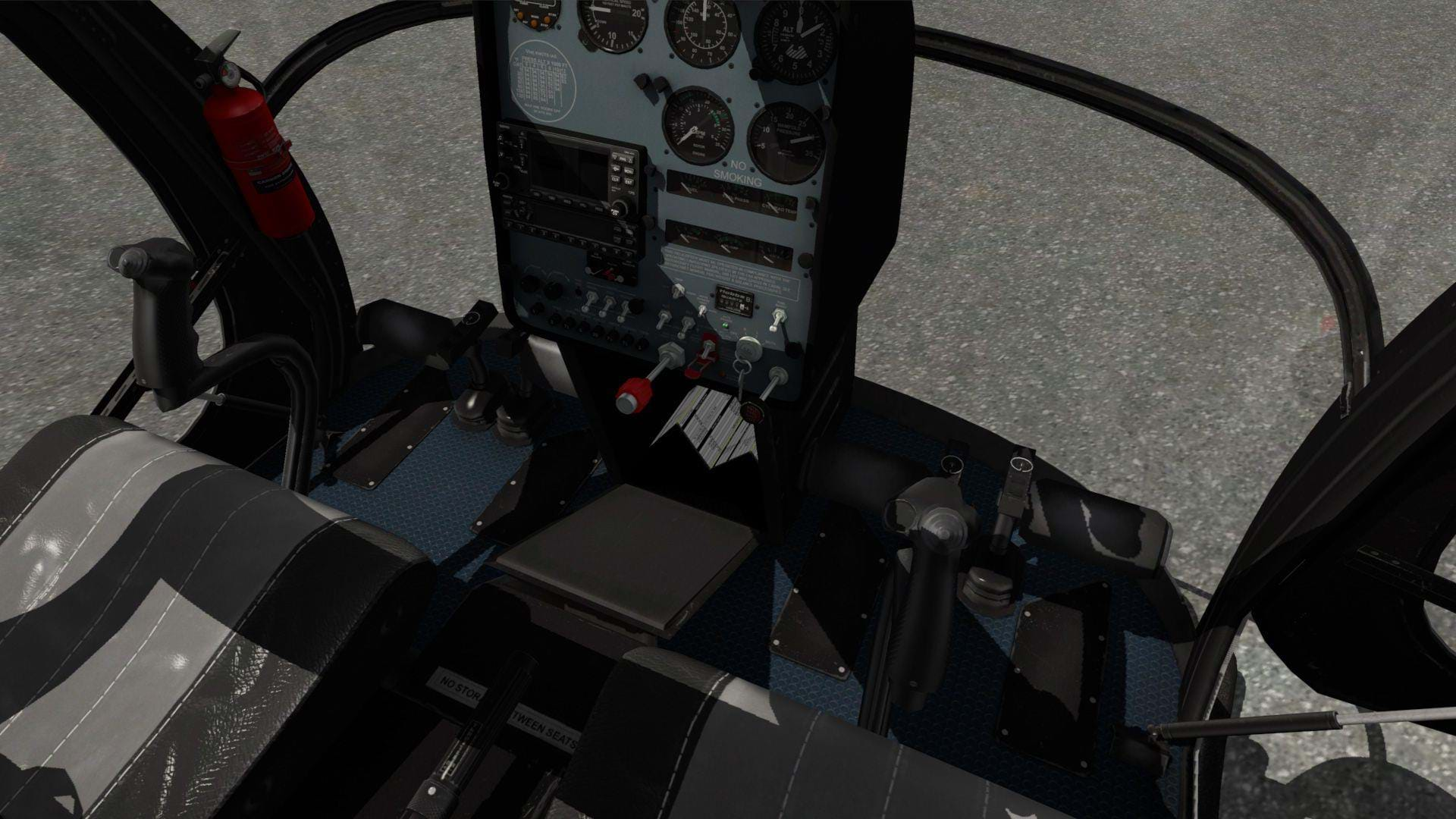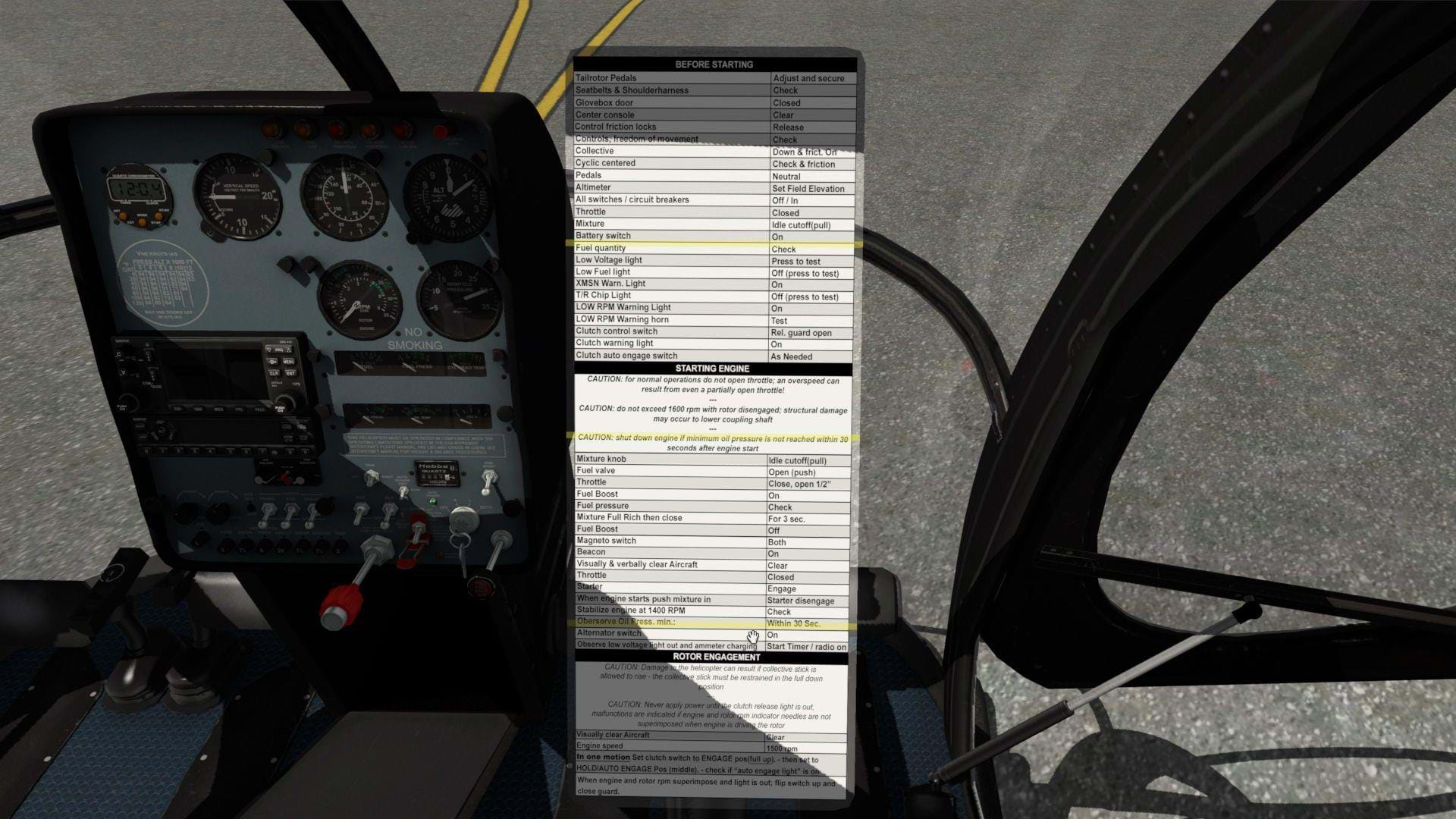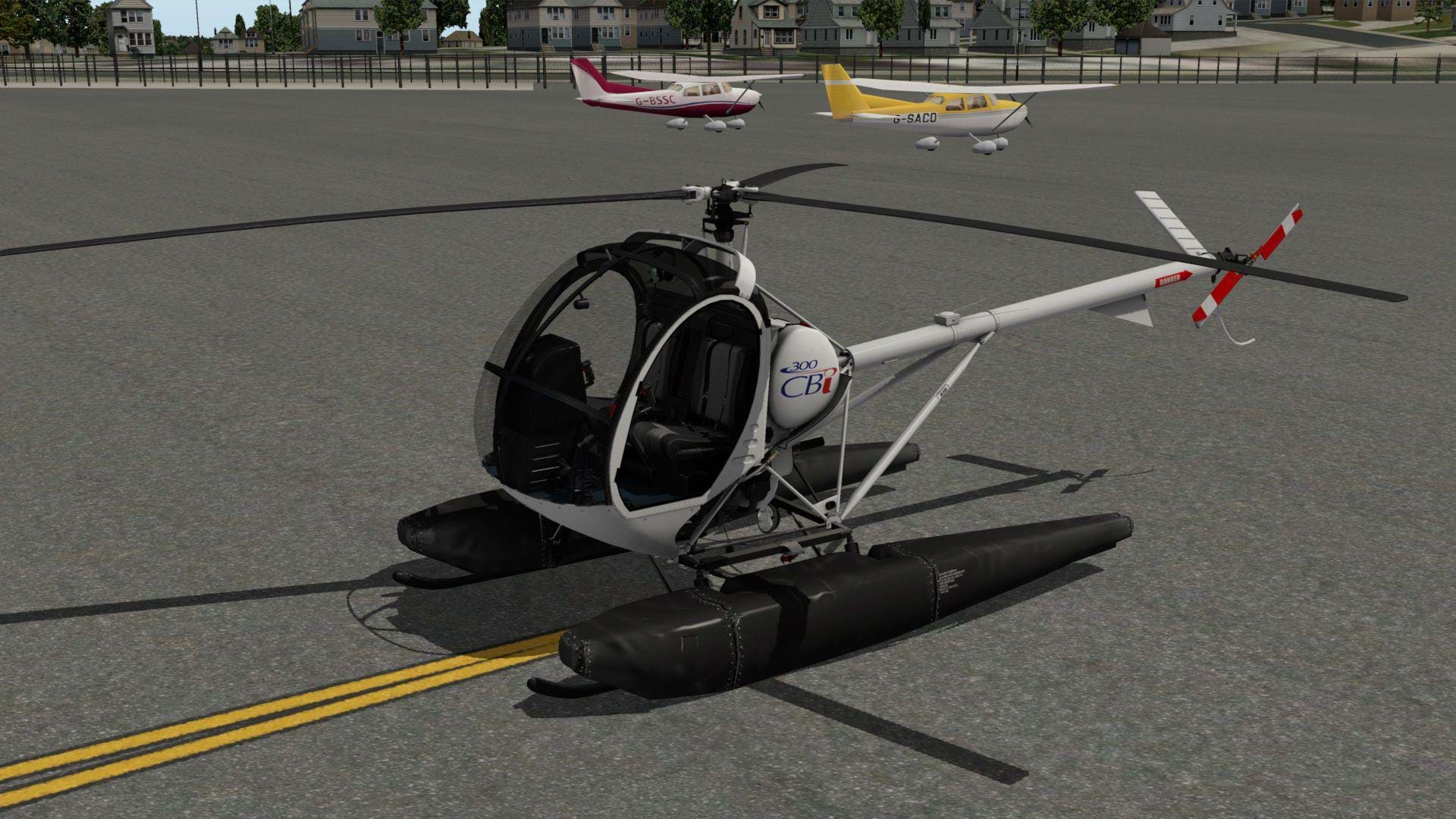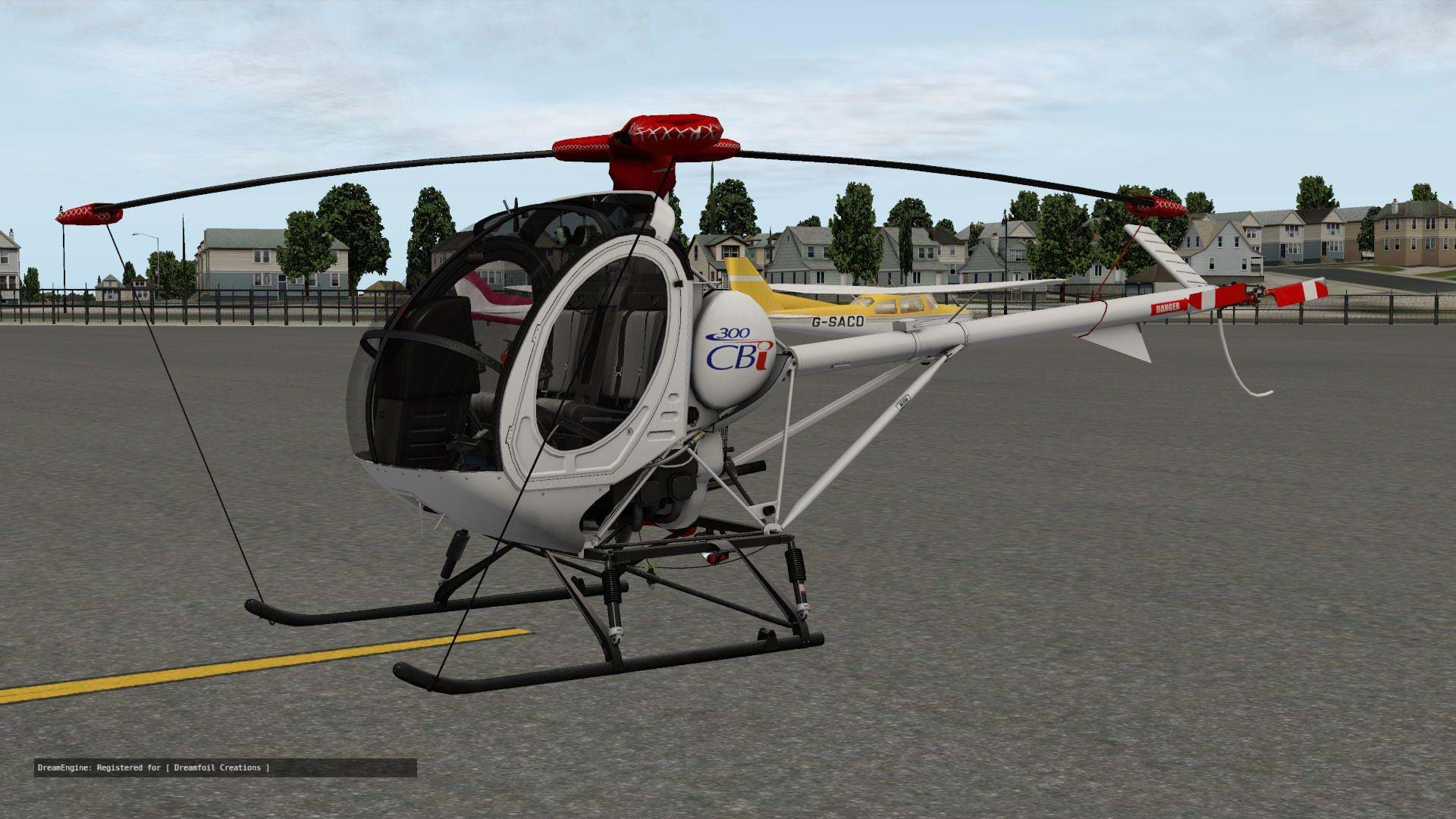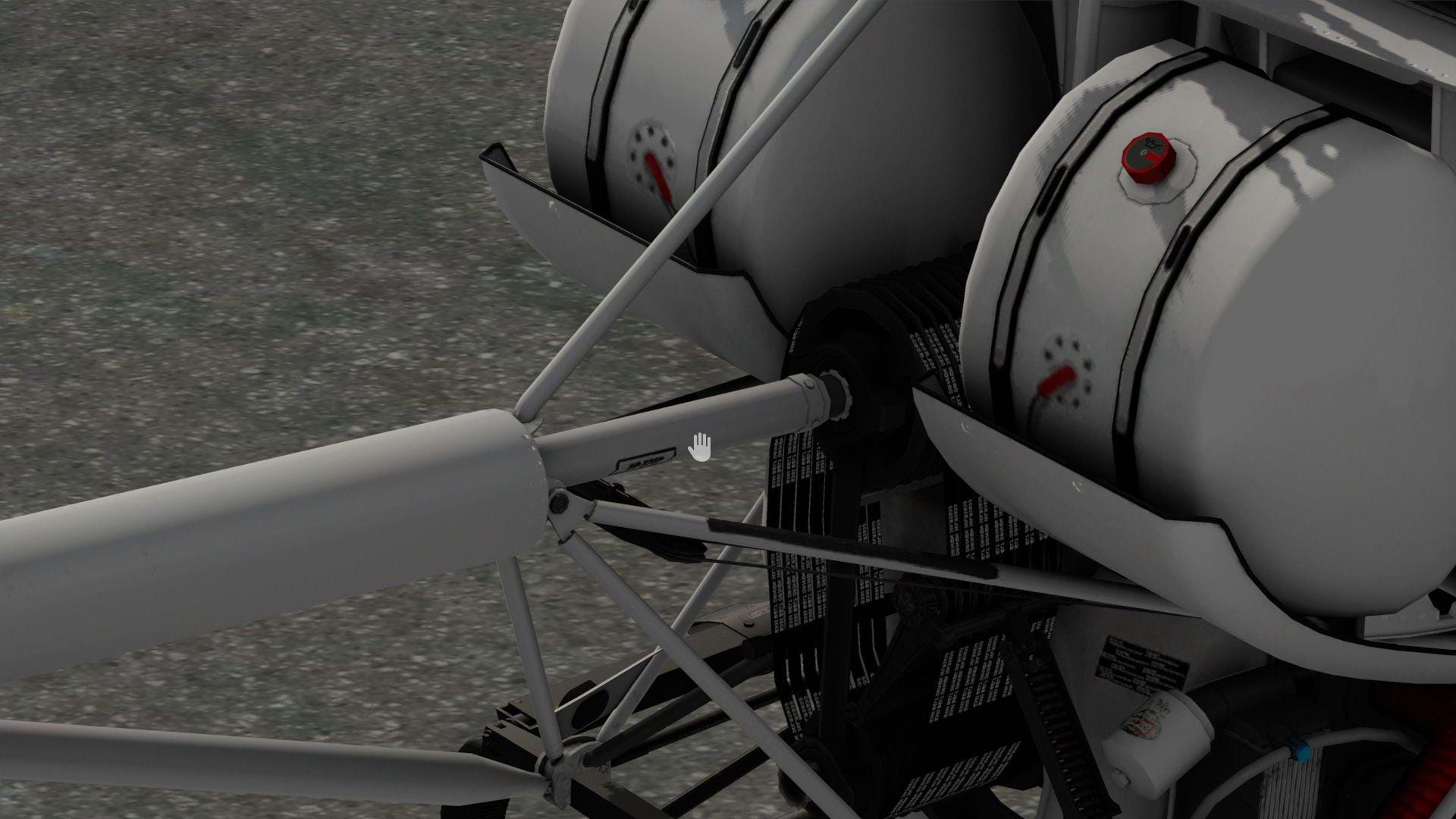The 27th of July is the 16 year anniversary of my first solo flight. Like thousands of aspiring helicopter pilots before me, and the thousands after me, this flight was made in a Hughes 269C. The 269 is known by many other names; Hughes TH-55, Hughes 300, Schweitzer 300, and most recently the Sikorsky 300. But all of these airframes, despite the improvements and changes over the years are still the same basic aircraft. This small helicopter doesn’t look like much, but it’s responsible for producing an enormous amount of professional aviators. Envisioned as a scout aircraft for the Army, the 269 found its niche as a trainer, and was cranking out well trained aviators over a decade before Frank Robinson put pencil to paper to create the R-22.
I was one of the lucky ones who began their career in the 269 series. I flew it all throughout my private and commercial pilot training which included a fair amount of touch down autorotations. I also learned how to fly vertical reference external loads and mountain flying in this airframe. And every now and then when I go home to visit my old flight school, I’ll get an hour in this wonderful machine just for fun. I was really excited when I found out that this mighty little helicopter would be given the DreamFoil treatment for X-plane- 10.
In this case DreamFoil chose the S300CBi variant. A helicopter optimized as a primary trainer, and light utility work. HeliSimmer got an advanced copy, and I’ve been able to put this model through its paces, here’s what I found.
Installation
Installing this aircraft is just as easy as any other X-plane model, just take the entire folder and drop it into your helicopter directory for X-plane.
First look
Details! Details! Details!
The real life S300CBi isn’t a very complex machine, it’s quite simple actually. It is a basic tube frame, landing gear, engine, transmission, fuel tanks, flight controls, rotors and a cockpit. While you can argue that most helicopters make up these parts, the 300 is essentially ONLY these parts! There is nothing fancy, or high tech about it. This simplicity actually makes it a little more difficult for a flight sim developer, because the 300, like the Bell 47 and Hiller UH-12 series aircraft, is almost completely exposed. All of those basic components are out in the open. Which means the modeler can’t hide details behind a simulated aluminum skin. DreamFoil took up this challenge, and succeeded. This is arguably the most detailed exterior model I’ve ever seen in any flight sim.
I did what was my normal 300C preflight, and looked at each area of the model to see what details were there, and what details weren’t. Being mostly familiar with the 300C some things have changed in the CBi, like engine inlet, exhaust, alternator location and pilot seating options. However, generally speaking, it all looked very familiar.
The main and tail rotors are modeled very nicely. The tail rotor even has torque stripe markings on its hardware! The main rotor head is modeled very nicely overall. The only thing I saw that wasn’t quite right on the rotor hub was that the cut out for the flapping hinge wasn’t there. The blade grips just sort of stick into the hub. But this is being a bit nitpicky.
My only really big critique of the outside visual model is that the main rotor mast appears to be too short. Now, to be fair, the TH-55 (Hughes 269A) did have a shorter main rotor mast. But this was lengthened in subsequent versions of the airframe. It looks like DreamFoil uses the old TH-55 length mast which is inaccurate for this model. [Editor's note: this has been corrected in the upgrade released by DreamFoil's update]
Other than the main rotor mast, I had to get really nitpicky to find something wrong with this exterior model, REALLY nitpicky! So much so that I almost feel like one of those rivet counters you have all read comments from in various flight simulation forums. Is this model a part for part perfect 3D replica of a 300CBi? No, it isn’t, no flight sim model is. But it’s so close that the few faults you will find will almost make you feel like a jerk for pointing them out. For the most part, the only things missing are cotter pins, and safety wire. I also noticed that the three bolts that hold the tail stinger into the tail boom were not there (see, I sound like a jerk, don’t I?) This may have been a change from the 300C to the CBi, I’m not sure, but even so, for the most part you actually have to count nuts and bolts to find things wrong with the model.
The last thing I’ll point out about the exterior model is the pilot figure. It’s a very good pilot model, he looks very life like. He’s just a little too short! Again, I know it sounds like I’m being nitpicky (that’s because I am being nitpicky) but I’m pointing this out because the poor guys feet don’t touch the floor! This isn’t really something that I would consider inaccurate. Some people are in fact that short. It just looks like this little guy is too young to fly helicopters.
The animation of all of the moving parts are very smooth and convincing, it’s also pretty easy on the frame rates. On my system, DreamFoil’s S300CBi has less of a frame rate impact then their Bell 407, even though it seems to be a more complex model.
This exterior model features some subtle animations that you might miss if you’re not looking carefully. The best example is the engine. After it’s started, you can see the engine vibrate and shake in its motor mounts underneath the cockpit and transmission.
The interior model is just a nice, and just as detailed. The cockpit felt odd to me at first because I’m accustomed to flying this ship from the left seat. In the 300C that was the side that had the starter button on the collective. The CBi gives the operator the option to move that capability to the right seat, which is what DreamFoil chose to go with. This was an easy fix for me however because the quick view menu allows you to rapidly switch over to the “passenger” side.
All of the switches, knobs and circuit breakers are clickable with sound. But DreamFoil didn’t stop there. They also included some very cool animations that really enhance the users’ experience. One of the best animations is the aircraft ignition key. Yes, the aircraft ignition key. It doesn’t just sit there statically on the key ring waiting for you to do something with it. It gently sways back and forth, dangling from the ignition key slot. It also moves in flight as the aircrafts pitch attitude changes. Speaking of the ignition key, not only is it clickable, allowing you to select the left or right magnetos, during your engine run up, it’s also removable. Click and hold the key with your left mouse button, and you can see the key come out of the key slot as you move the mouse away. It’s simple, but really neat.
The interior model is also animated in a way that I’ve never seen before. From the virtual cockpit view using the arrow keys on the keyboard you can shift your view up down, left and right. This is standard on X-plane 10, but what’s cool about this model, is that from the virtual cockpit view, moving from outside the model to back inside the cockpit causes the entire aircraft for move and shift, as if model is responding to the added weight of the viewer. This effect is also present when shifting from the various quick views.
Another really cool animation is the checklist. Use your mouse to open the little storage area on the center console, and there you’ll see a small accordion folded piece of paper. Click on it, and it reveals it’s self to be the checklist. It floats there before your eyes as if you were holding it yourself. It even looks like it’s laminated! You can use your mouse to flip it over to see the checks on the other side. When you’re done with it, you can use the mouse to put it back in the storage area and close it back up.
This model features the same in sim menus that the DreamFoil Bell 407 has. This enables the user to select all sorts of options, like floats, ground handling wheels, and cargo hooks, as well as the livery a selection all on the go while the sim is running.
This model also features a very unique and novel way of applying the rotor tie downs after a flight. From an exterior view simply click on the rotor blade you want, and you’ll see a red line appear as well as several areas on the fuselage highlighted by white circles. As you drag the mouse over to one of these highlighted areas, you’ll see a red line appear between the mouse cursor and the rotor blade. You’ll also notice the blades are now moving as if being moved by hand to position them to be tied down. Once your mouse is over the area you want to tie the blade to, release the mouse button and the blade tip cover and tie down rope will appear!
Sounds
This is probably my favorite part of this model. The sounds are nearly perfect. I highly recommend flying this model with a good set of headphones to get the full experience. In my opinion, a piston powered helicopter is a difficult soundscape to get right. There have been many flight sim models before this one that have been adequate for the platform they were on, but not very convincing. The sound modeling for DreamFoil’s S300CBi made me down right nostalgic! In particular the sounds of the engine starts. It doesn’t sound exactly like I remember it, this engine sounds like it’s struggling a bit, but it is close enough to be really enjoyable.
The exterior sounds are near perfect as well. This model benefits a lot from DreamFoil’s Dream Engine plugin. All of the exterior sounds are dynamic, and change as the user pans around the model from the outside. So if you’re closer to the tail rotor, you’ll hear more tail rotor noise than you would from the engine. It’s a nice effect that really goes well with the wonderful sound engineering that went into this model.
Systems
Like I said earlier, the 269/300 series aircraft are not high tech, electronically complex helicopters. They lack fancy flight control systems, and advanced automations. There isn’t even any hydraulics on the entire aircraft. But again, just because the real life helicopter is simple, doesn’t mean modeling it’s systems in a realistic and convincing manner is easy. And also, again, DreamFoil did a very good job.
Piston helicopters, like the S300CBi are a little different than their turbine powered counterparts. Starting the engine and getting the rotor system turning are two separate steps.
Starting the real S300 is a lot like starting this model. One key difference I noticed was the use of the fuel mixture. In real life, you press and hold the starter button until the engine lights off. Immediately after the engine has started the mixture is pushed into the full rich position. In this model, you have to gradually push in the fuel mixture while holding down the starter before the engine with start. This is likely a limitation of X-plane, but it’s the only real difference I’ve noticed between the real thing and this model.
To engage the rotor system, most piston powered helicopters like the S300CBi feature a tension belt drive system. This allows the engine to gradually take on the load of the transmission and rotor system.
The belt drive system has apparently been updated from the 300C I learned to fly on. The CBi now features an automatic clutch engagement option similar to that of the Robinson R22. This makes it a lot easier than it used to be with the manual clutch. Weather you use the manual, or automatic engagement method, the pilot is slowly adding tension to the drive belts that connect the engine driveshaft to the transmission.
The manual method is what I was used to, so that’s what I used the most during my testing. I also focused on this because it’s the more difficult mode to model convincingly. There are a few techniques for doing this in real life. Some do multiple short bumps of the switch until the belts engage and the clutch catches, or some leave the switch up until the engine RMP droops and then place the engagement switch to hold. Either way, as soon as it catches, you wait with the switch in the hold position until the engine and rotor RPM needles are superimposed over one another.
The DreamFoil S300CBi models the manual method beautifully! You can use either technique and it works just as it would in the real thing. After mapping the clutch engagement switch to a momentary toggle switch on my homemade switch panel, engaging the rotor on this model felt almost exactly like the real thing. This is another time when the Dream Engine sound plugin really shines. The engine RPM droop sounds perfect. The quiet chirp of the belt engagement and RPM increase of the rotor system is spot on.
DreamFoil’s S300CBi features the option of adding an engine governor. One of the 300C’s I used to fly had an engine governor, which was really easy to use, and pretty effective. From what I’ve been told, there are many engine governor kits available for the 269 series aircraft. DreamFoil selected a kit that adds the governor control switch to the collective, which also repositions the engine starter button. I’ve never seen a configuration like this, but that doesn’t mean it’s inaccurate.
The governor pretty much makes rotor RPM management as easy as a turbine powered helicopter. The governor is all well and good, but I wanted to see how the aircraft performed without it.
In flight manual throttle operation is something most home simulator pilots have never really had to do as a normal procedure. This model gives you the opportunity to do it. It must be noted that the real life non-governed S300CBi isn’t 100% manual throttle. Much like the Hughes 300C it’s got a mechanical correlator that does its best to keep the rotor RPM in the green arc during collective adjustments. If the correlator is maintained well, it’s almost as good as a governor, and you’ll only need to make slight adjustments. Other correlators need much more input from the pilot. As it is at the time of this writing, DreamFoil’s S300CBi’s correlator needs a little more pilot input that what I was used to. But, that isn’t to say that flying it as it is isn’t fun. [Editor's note: correlators are different from model to model but DreamFoil added a way to customize it so you can make it more like the one you might be using in real life]
The need to manually control the rotor RPM forces the pilot to keep his eye on his dual tachometer and constantly listen to the aircraft for any changes to the rotor. This might be really difficult for those of you using a joystick set up that doesn’t have a throttle axis. It you do have a throttle axis, especially on a desktop mounted system, be sure that it’s mapped to a slider or a rotary knob that’s easily accessible and comfortable to use without taking your hand off the collective. You’ll need to make constant adjustments to keep the Rotor and engine from under speeding as well as over speeding. It’s a hand full for sure, but once you get the hang of it, it’s very rewarding.
Even though I enjoyed the increased pilot work load of the non-governed throttle, some may not find it as realistic as an S-300Cbi they’ve flown in real life. As this review is being written, DreamFoil is working on a new customization menu that allows the user to adjust the effectiveness of the correlator to more closely mirror what that user may be accustomed to, or to their preference.
One of the only things I didn’t like is the lack of a trim ball on the instrument panel. DreamFoil gives the user the option for a yaw string in the customization menu, which is nice, but I’d really like to see a trim ball somewhere on the panel. Now I realize there are plenty of VFR only trainers out there getting along just fine with just a yaw string. And DreamFoil’s S300Cbi is a VFR ship. But I’d still like to have that as an option.
As you’ve probably figured out, this model features a lot of interactive features, like the blade tie downs. There’s another feature that I love even more than that. At my flight school it was jokingly known as the poor man rotor brake. The S-300CBi much like the 300C I flew is much too small to have a rotor brake installed. But what you could do after the aircraft was shut down, was step outside, and go to the exposed portion of the tail rotor drive shaft. To slow and eventually stop the rotor, you can place your hand palm down in a C shape on the still spinning drive shaft. Placing you hand here would provide enough friction to get the rotor slowed down and eventually stopped. You could even turn the blades manually from here to position them for tie down or to move the helicopter back into the hangar.
DreamFoil added this capability to their model which I thought was really cool. Hovering your mouse over the drive shaft you’ll see a hand icon appear, which allows you to slow the rotor, and well as manually turn it after it has stopped. This was a fantastic detail to add!
Flight Dynamics
So, after all the complements about the model, sounds, and systems, how does this model handle? This is a case where I have a good amount of experience with the actual aircraft the model is emulating, so it makes it easier as a reviewer to form an opinion on realism.
I also know that I’m not the only guy out there who’s spent a lot of time in the 269/300 series helicopters who will fly this model, and opinions may vary. As always, there is a lot to consider when discussing the realism of a flight simulator model. There are lots of variables that will effect a person’s perception of what’s realistic and what isn’t, especially in the world of home flight simulation. Things like flight control hardware, frame rates, and now even the use of virtual reality technology will affect the way someone thinks about models realism.
This model also features DreamFoil’s’ stability customization menu that I wrote about in the Bell 407 review. This allows the user to basically control a virtual stability augmentation system that will help a novice pilot get the hang of things, as well as help someone with a lower end joystick set up stay ahead of the aircraft. For the purpose of this review, the stability scales of each axis have been set to 0%. I only mention this because your experience may be different if flying on a different setting.
Picking up to a hover is about what I expected from a real 300, as far as the amount of left pedal necessary to maintain a constant heading. Keeping up with the rotor RPM is a bit trickier than I remember, but manageable.
The aircraft has about the same amount of inherent drift at an IGE hover that I would expect. As far as light 2-3 seat training helicopters go, the S300 is a pretty stable aircraft. This model really seems to emulate the real thing in an IGE hover. The real life S300 is a very forgiving aircraft for its size, this model about as forgiving as the real thing.
Torque effect is present in all phases of flight, it’s not unreasonable to see changes in yaw during power changes via the collective or the throttle. In some cases I think this effect might be a little over stated, but overall I liked that the power changes had a more substantial effect on yaw.
Flight control response is very difficult to critique. Mostly because the feel of flying a helicopter like the S300 is very difficult to duplicate. There is no hydraulic system on this ship in real life, only a spring tension force trim system. This gives the 300, and its bigger brother the 500 series, a very distinct feel when flying that is unlike any of the hydraulically driven, or hydraulically boosted flight controls of other helicopters. So the amount of effort required to move the cyclic at home isn’t the same as it would be in real life. You could argue this about any flight sim helicopter, but an aircraft with hydraulically driven flight controls generally have a smooth feel to them, which is part of the point of having hydraulics. This smooth feel can be reasonably compared to most modern home use gimbaled flight control systems.
What is different about the 300 is that even though the force trim can relieve the pilot of back pressure, there is always a sense of resistance in the cyclic that you can feel when making control movements. Some self centering spring flight sticks offer resistance, but in my opinion it’s not really comparable to the feedback forces of a non-hydraulic equipped helicopter like the 300. That resistance varies on the individual strength of the pilot’s right arm, as well as the current state/position of the force trim system. So without a Hughes designed force trim system installed on my pro-flight trainer, it’s kind of hard to tell if the control response is realistic or not. But so far in my testing, this models roll and pitch rates are pretty spot on, as well as cyclic and tail rotor authority. Based on my guess, with the lack of a force trim system this models control responsiveness seems appropriate. If someone had developed a hydraulic kit for the S300CBi, I imagine it would fly a lot like this.
Autorotations in this model are really close to the real world ship, both power on and throttle to idle. I was really happy to see a tachometer needle split, when I lowered the collective without rolling the throttle to idle, which is something you don’t always get in a turbine powered helicopter unless the rotor is starting to over speed. In this case, it’s the engine power reducing as the autorotative forces keep the rotor RPM in the green arc. I was really happy to see the amount of right pedal that is required as you bottom the collective to compensate for the loss of torque. That’s something a lot of models miss.
While entering the auto, a little aft cyclic and the aircraft seems to naturally settle into a 50-60kt pitch attitude, which is a lot like the real aircraft. You’ll also need a little right pedal to maintain trim, the amount of which was pretty close to the actual aircraft.
Power recoveries (throttle not rolled to idle) are about as challenging as I remember. The sudden increase in power causes a sudden yaw during the flair that takes a little practice before it can be anticipated and corrected. I was pleased to see that this model showed this tendency as well.
One of the biggest drawbacks of this flight model is one of the biggest draw backs of the real life helicopter. It is slow! The 269/300 series helicopters are what some old time pilots jokingly refer to as a cross county aircraft, as opposed to a cross country aircraft. Please don’t mistake this as a critique of DreamFoil, quite the opposite. I commend their commitment to realism. I only mention this because simmers out there not familiar with this airframe may not yet realize that this helicopter isn’t as fast as an R22 or a R44. Don’t expect a 100kt cruse speed. The 300 is a slow helicopter in real life, and it’s a slow helicopter in this simulator model.


